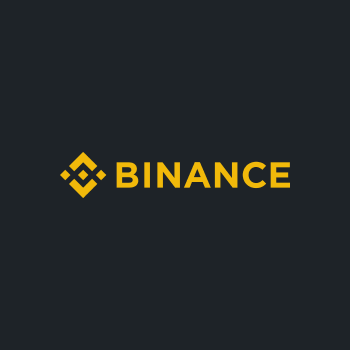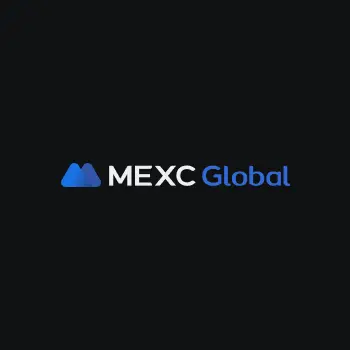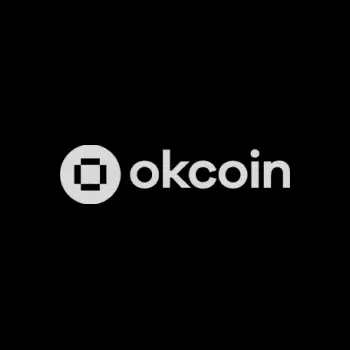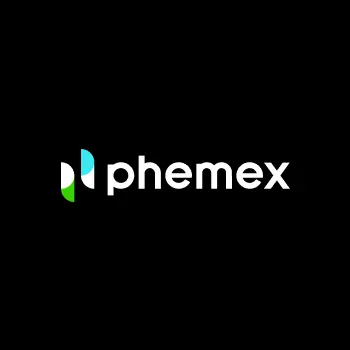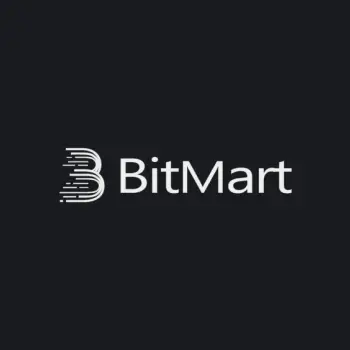Best Litecoin Exchanges in 2024
Best Litecoin Exchanges in 2024
Here are the best Litecoin exchanges for your consideration.
promotions
Get up to 100 USDT in trading fee rebate after full verification, first deposit, and first trade.Coins
promotions
Receive $10 in Bitcoin when you register with a referral link and buy $100 worth of crypto on Okcoin.Coins
promotions
Get mystery boxes worth up to $10,000 when you register through a referral from a friend.Coins
promotions
Invite a friend and earn up to 30% of their trading fees as a reward.Coins
Review of Our Top 10 Litecoin Exchanges
Read these short, sharp reviews before you look for a Litecoin exchange. They provide a high-level overview of a selection of the platforms on this page.
1. Binance

- 0.0000039 - 0.0005
- spot trading
- derivatives trading
-
futures trading
12
No result
- Bitcoin
- Ethereum
-
Binance Coin
291
No result
- Sepa
- GiroPay
-
Visa
305
No result
- English
- Indonesian
-
Spanish
22
No result
- France
- Italy
-
Lithuania
13
No result
- 2FA Google Authenticator
- 2FA SMS
- German
- Russian
-
Korean
15
No result
- Blog
- News
-
Announcements
1
No result
2. Blockchain.com
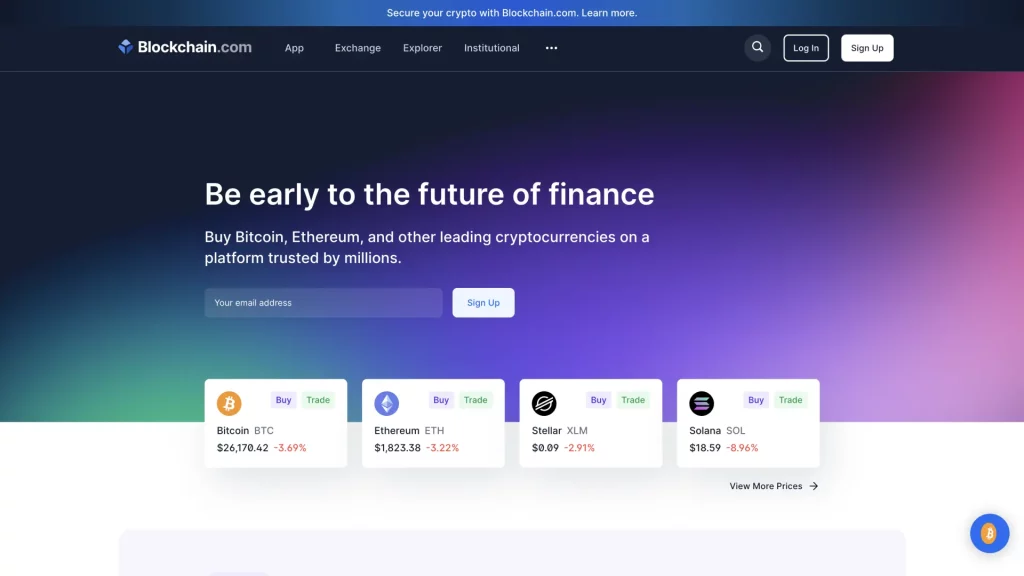
- spot trading
- margin trading
-
staking
3
No result
- Bitcoin
- Ethereum
-
Bitcoin Cash
28
No result
- Bank transfer
- Sepa
-
Faster Payments
49
No result
- English
- Spanish
-
Portuguese
2
No result
- Singapore
- Puerto Rico
- English
- Learn and Earn
- Podcasts
- Research and Analysis
3. LBank
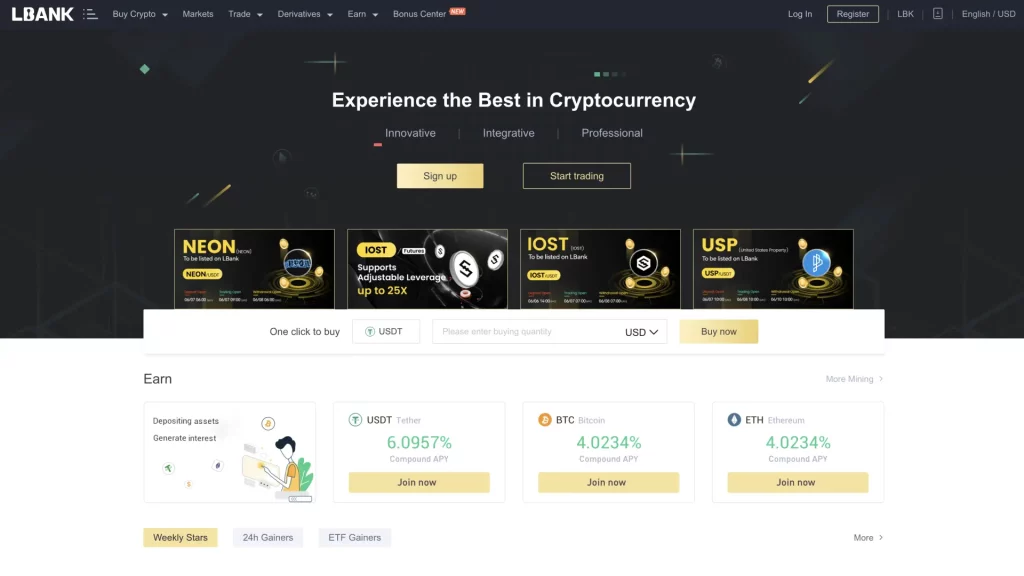
- spot trading
- derivatives trading
-
futures trading
5
No result
- Ethereum
- Terra
-
Polygon
241
No result
- Visa
- MasterCard
-
Bank transfer
255
No result
- English
- Russian
-
Spanish
27
No result
- 2FA SMS
- 2FA Google Authenticator
- English
- Turkish
-
Polish
24
No result
- Academy
- Guides
- Videos
4. MEXC

- Free
- spot trading
- derivatives trading
-
futures trading
9
No result
- SHIBA INU
- Wrapped Dogecoin
-
ADAX
191
No result
- Visa
- MasterCard
-
Bank transfer
110
No result
- English
- Russian
-
Turkish
14
No result
- Seychelles
- Estonia
-
Switzerland
2
No result
- 2FA Google Authenticator
- 2FA SMS
- English
- Turkish
-
Vietnamese
5
No result
- Videos
- Learn and Earn
-
Blog
2
No result
5. Okcoin

- 3.99%
- spot trading
- OTC trading
-
staking
1
No result
- Bitcoin
- Ethereum
-
Tether
101
No result
- Visa
- MasterCard
-
ApplePay
107
No result
- English
- United States
- Canada
-
United Kingdom
26
No result
- 2FA SMS
- 2FA Google Authenticator
- English
- Blog
- Developer Grant
-
Videos
1
No result
6. OKX

- Free
- spot trading
- derivatives trading
-
perpetual swaps trading
9
No result
- Tether
- Bitcoin
-
Litecoin
92
No result
- Bank transfer
- Visa
-
MasterCard
344
No result
- English
- Chinese (Mandarin)
-
Simplified Chinese
14
No result
- 2FA SMS
- 2FA Google Authenticator
- English
- Learn and Earn
- Announcements
- Videos
7. Phemex
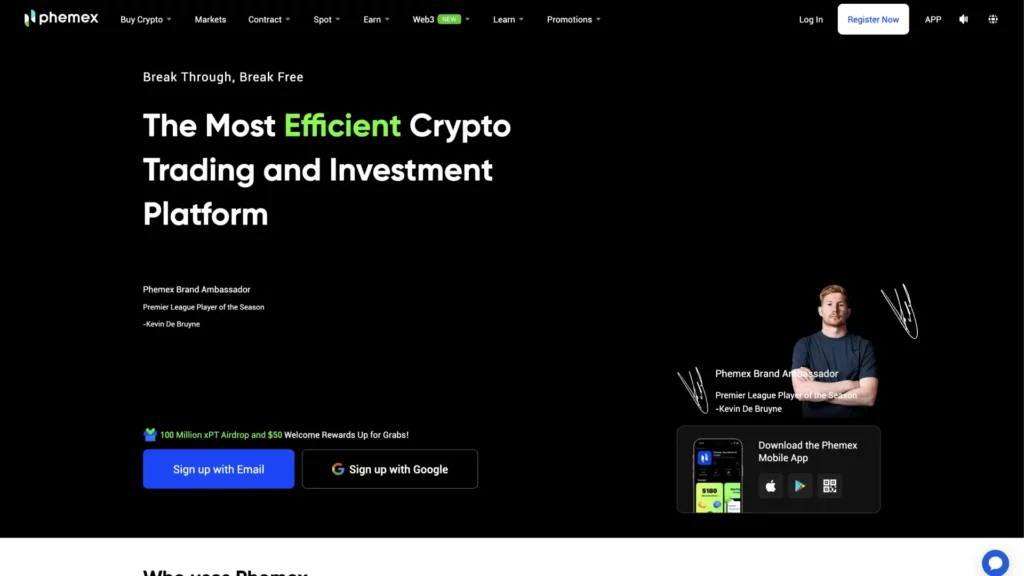
- 0.0001 BTC
- spot trading
- derivatives trading
-
perpetual contracts trading
8
No result
- Ethereum
- Cardano
-
Chainlink
232
No result
- SwiftCash
- Bank Transfer (ACH)
-
Sepa
309
No result
- English
- Russian
-
Japanese
6
No result
- 2FA Google Authenticator
- English
- Japanese
-
German
2
No result
- Blog
- Videos
-
Academy
4
No result
8. Poloniex
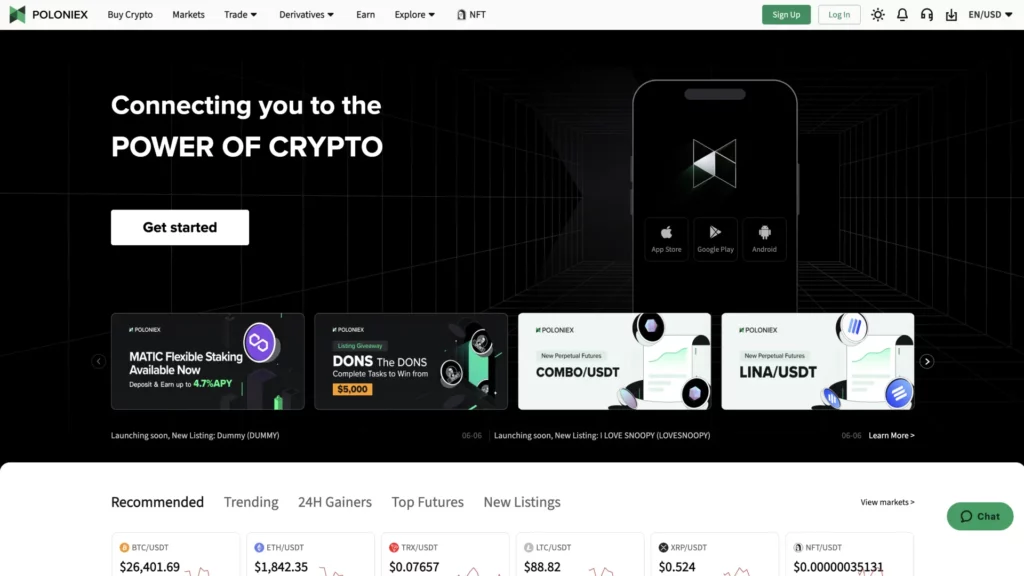
- 3.5% - 5%
- spot trading
- derivatives trading
-
futures trading
7
No result
- APENFT
- Bitcoin
-
Ethereum
364
No result
- Bank transfer
- Visa
-
MasterCard
367
No result
- English
- Chinese (Mandarin)
-
Simplified Chinese
9
No result
- Panama
- 2FA SMS
- 2FA Google Authenticator
- English
- Videos
- Guides
- Blog
9. ProBit Global

- 0.0005
- spot trading
- staking
-
wallet
2
No result
- ProBit Token
- Bitcoin
-
Geegoopuzzle
638
No result
- Bank transfer
- Visa
-
MasterCard
755
No result
- English
- Azerbaijani
-
Indonesian
42
No result
- South Korea
- 2FA SMS
- 2FA Google Authenticator
-
2FA Microsoft Authenticator
2
No result
- Arabic
- Bulgarian
-
Czech
36
No result
- Videos
- Learn and Earn
-
Academy
1
No result
10. BitMart
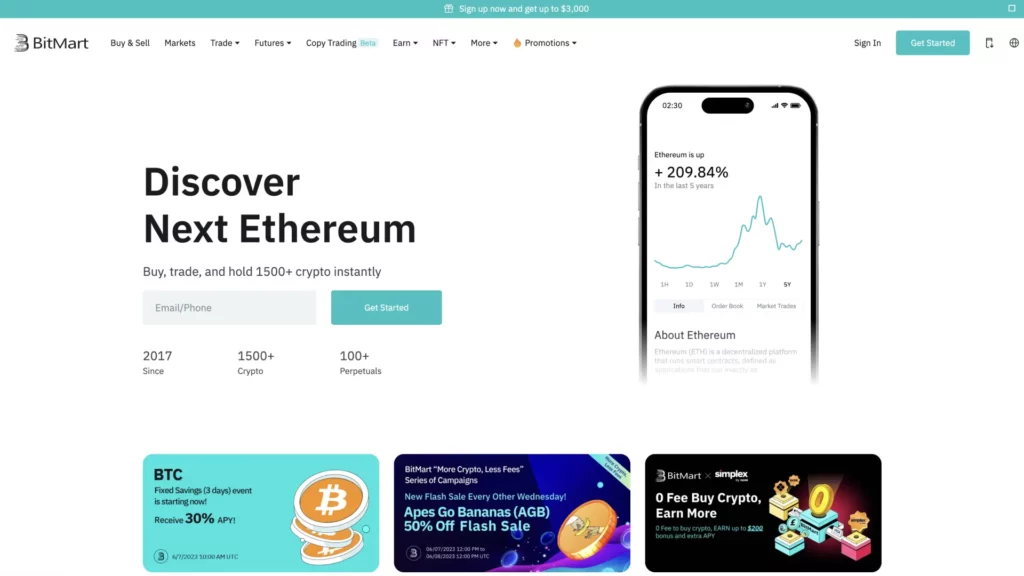
- 0.001
- spot trading
- derivatives trading
-
futures trading
8
No result
- Argentine Football Association Fan Token
- Berry
-
Burn
1616
No result
- Bank transfer
- Bank Transfer (ACH)
-
Visa
1624
No result
- English
- Spanish
-
Japanese
6
No result
- United States
- 2FA SMS
- 2FA Google Authenticator
- English
- News
- Videos
Why You Should Listen to CCN
There are hundreds of LTC exchanges, and finding the best is no simple task. It requires detailed analysis and the ability to avoid bias.
At CCN, we review crypto platforms thoroughly. This means no shortcuts and no stone left unturned.
We take on the role of trader and view sites through the lens of our readers. This is how we provide a genuine insight into what you can expect.
The result gives you reviews that are comprehensive, informative, and transparent. After reading one, you’ll quickly know whether you should consider the Litecoin exchange.
Overview of the Best Litecoin Exchanges in 2024
| Casino | Welcome Bonus | Our Rating |
|---|---|---|
| Binance | Get up to 100 USDT in trading fee rebate after full verification, first deposit, and first trade. | 4.83 |
| Blockchain.com | N/A | 4.83 |
| LBank | Get 255 USDT Bonus when you sign up. | 4.83 |
| MEXC | Get 5 USDT bonus when you deposit 300 USDT. | 4.67 |
| Okcoin | Receive $10 in Bitcoin when you register with a referral link and buy $100 worth of crypto on Okcoin. | 4.67 |
| OKX | Get mystery boxes worth up to $10,000 when you register through a referral from a friend. | 4.67 |
| Phemex | Earn up to $6050 in crypto when you sign up | 4.67 |
| Poloniex | Get Up to $1000 Welcome bonus when you sign up and complete tasks. | 4.67 |
| ProBit Global | Invite a friend and earn up to 30% of their trading fees as a reward. | 4.67 |
| BitMart | Get Up to $3,000 Welcome Bonus when you sign up. | 4.50 |

Disclaimer: Investing in cryptocurrencies carries significant risk. Values are highly volatile. Never invest more than you can afford to lose. This site does not provide financial advice. Act based on your own research and consult with a financial professional before making decisions. Don’t invest unless you’re prepared to lose all the money you invest.
What Is Litecoin?
Litecoin is a type of digital currency, also known as cryptocurrency. It appeared on the market as a faster and cheaper alternative to Bitcoin.
Charlie Lee is the creator, and he unveiled it in October 2011. Like Bitcoin, Litecoin is based on blockchain technology. This is a decentralized system that keeps a record of all transactions.
The main purpose of LTC is to facilitate peer-to-peer transactions online. It allows people to send and receive money quickly and securely without a central authority like a bank.
Litecoin uses a different algorithm than Bitcoin. In this way, it offers faster transaction confirmation times and a larger supply of coins.
One key feature of Litecoin is its "scrypt" algorithm. It allows miners to use regular computers to ‘dig up’ this digital asset.
This means that more people can participate in the mining process than with Bitcoin. For instance, BTC is known for being difficult to mine since you need specialized hardware.
LTC has a block-halving event every four years, like Bitcoin. Blocks were once worth 50 coins, but as of August 2023, the reward becomes 6.25 coins per block.
There is a Litecoin Foundation that promotes the coin. It is a thriving community and a great place to learn more about the cryptocurrency.
How Do Litecoin Exchanges Work?
An LTC trading platform is a marketplace where people can buy and sell digital coins. It works similarly to stock trading platforms, where you can buy and sell company shares.
You can trade Litecoin for other cryptocurrencies or fiat on a crypto exchange. The exchange acts as a middleman. It connects buyers and sellers and facilitates transactions.
When you want to buy currency, you place an order on the exchange. You specify the amount you want to buy and the price you're willing to pay.
The exchange matches your order with someone who wants to sell at that price. Once you complete the trade, you own the purchased currency.
Likewise, you place a sell order on the exchange if you want to sell. The platform matches your sell order with someone who wants to buy at that price. Then it executes the trade.
You can also trade one crypto for another. For instance, you can trade LTC for ETH or BTC.
Crypto trading platforms provide tools and charts to help you track the price of coins. With this information, you can make wise trading decisions. The best LTC exchanges also have other tools to help you become a better trader.
What Are the Two Main Types of LTC Exchange?
There are two main options for buying, selling, and trading cryptocurrencies like Litecoin. They are called centralized and decentralized crypto exchanges. Here's a simple explanation of their functions and how they differ.
Centralized exchanges (CEXs)
A centralized crypto exchange is like a traditional financial institution. It is owned and operated by a company or organization that acts as a central authority. Thus, it controls and manages the exchange.
When you use a CEX, you deposit your crypto or fiat into your account on the platform.
All transactions go through the exchange's systems and servers. The exchange matches buy and sell orders. It also determines the prices and keeps track of the balances of users' accounts. It acts as an intermediary between buyers and sellers, ensuring the smooth execution of trades.
Centralized exchanges generally offer a user-friendly interface, advanced trading features, and customer support. However, since they are centralized, they are vulnerable to hacking, fraud, or government regulations.
Decentralized exchanges (DEXs)
A DEX operates on a blockchain network, following a peer-to-peer (P2P) model. It eliminates the need for a central authority by using smart contracts.
A smart contract is a self-executing agreement coded on the blockchain. It automatically matches buy and sell orders without relying on a centralized entity.
On a DEX, you retain control of your funds as they are stored in your wallet, not on the exchange. This provides a higher level of security and reduces the risk of hacking or fraud.
Decentralized exchanges promote privacy and censorship resistance. They don’t require users to disclose personal information or undergo a verification process. However, DEX platforms have limited trading options and liquidity compared to CEXs.
The main difference between CEXs and DEXs lies in control and ownership. Companies such as Binance and Coinbase own and operate centralized exchanges. Meanwhile, the blockchain network and users govern decentralized exchanges.
Picking a Litecoin Exchange: Key Criteria
The guide is designed to help you discover reputable LTC trading platforms. You’ll find the right one for your needs on this page.
However, the #1 option here is not necessarily the right choice for you. Indeed, a friend may like Kraken, Bitfinex, or Gemini. Another may prefer Paxful, Bitstamp, or Coinmama.
Yet you may not find any of these sites to your taste. Keep reading to look at the most important factors to consider when deciding.
Security is of paramount importance
Security is a serious consideration when you choose a Litecoin exchange. Robust security measures protect users' funds, personal information, and overall trading experience.
Find out whether the exchange uses the following security protocols.
Two-factor authentication (2FA)
A reputable exchange will offer 2FA. It is an additional layer of security that requires users to provide a second form of verification.
For instance, an authentication app and its password will generate a unique code. This helps prevent unauthorized access to user accounts.
Encryption
Crypto exchange platforms should employ robust encryption protocols to safeguard sensitive data.
Encryption ensures that sensitive information, such as transaction details, is transmitted and stored securely. This makes it difficult for malicious actors to intercept or decipher data.
Cold storage
Many exchanges use cold storage for a significant portion of users' funds. Cold storage means most cryptocurrencies are stored offline in secure, isolated hardware devices.
This reduces the risk of hacking and unauthorized access, since the funds are not directly connected to the internet.
Security audits
Regular security audits by external parties also help identify vulnerabilities. These guarantee that the exchange's systems and protocols follow industry best practices.
Transparent exchanges often make the results of these audits available to the public. Doing this works towards increasing trust and confidence in the company.
Account security features
The best Litecoin exchanges should provide features like email notifications for account activity. They should also give you the ability to view and manage active sessions.
These features empower users to monitor their accounts and identify any suspicious activity.
Regulatory compliance
Licensed exchanges must comply with relevant regulations. They adhere to Anti-Money Laundering (AML) and Know Your Customer (KYC) requirements.
By doing this, they contribute to a more secure trading environment. These measures help prevent illicit activities and ensure that users are protected.
No system is fully resistant to risks. Yet prioritizing security in a Litecoin exchange significantly is essential. It reduces the potential for hacks, theft, and unauthorized access.
Users should also practice good security hygiene. This includes using strong and unique passwords and enabling 2FA. You must also be cautious about phishing attempts or suspicious links.
User-friendliness dictates how easy it is to use a platform
User-friendliness is a crucial aspect to consider when you select a Litecoin exchange. A user-friendly exchange interface means a seamless trading experience for users.
Here are some key factors that contribute to user-friendliness on a Litecoin exchange.
Intuitive design
A well-designed interface with clear navigation and an intuitive layout is essential. It makes it easy for users to find the necessary features and perform actions efficiently.
Top exchanges focus on simplicity and minimize complexity. The design allows users to easily navigate the platform.
Easy registration and verification
The registration process should be straightforward, requiring minimal steps and providing clear instructions. User-friendly exchanges streamline the verification process.
They also provide clear guidance on the required documentation. This ensures a smooth onboarding experience.
Clear buy/sell processes
Buying and selling digital assets on a top Litecoin exchange should be easy. User-friendly exchanges present a clear and concise interface. They guide users through the transaction process, making it simple to execute trades.
Responsive trading charts
Displaying real-time trading charts enhances the trading experience. This is especially true if there are features like zooming and technical indicators
Exchanges with customizable charts let you analyze market trends effectively.
Account and portfolio management
The best LTC exchanges offer intuitive account management features. This lets users view balances, transaction history, and open orders clearly and in an organized fashion.
Top platforms provide portfolio overviews, including the value and performance of holdings. As a result, users get a comprehensive snapshot of their investments.
Mobile-friendly interface
With the increasing use of smartphones, a mobile-friendly interface is essential.
User-friendly exchanges offer responsive and optimized mobile applications or mobile-responsive websites. This makes it convenient and easy for users to trade on the go.
Customer support
Accessible and responsive customer support is an important user-friendliness aspect.
The best Litecoin exchanges provide support channels like live chat, email, or a help center. These features assist users in resolving issues or answering inquiries promptly.
Don’t forget about liquidity
Liquidity is a vital factor to consider when you select a Litecoin exchange. It refers to buying or selling crypto quickly and at a fair price without significantly impacting the market.
Keep reading to discover crucial information relating to crypto trading platform liquidity.
Market depth
Liquidity is often measured by market depth. This represents the volume of buy and sell orders at different price levels.
Higher market depth indicates a more liquid market with more participants. The result is a smoother and faster execution of trades.
Trade execution
A liquid exchange ensures that buy and sell orders are matched efficiently. Higher liquidity lets you enter and exit positions promptly. You don’t have to worry about significant delays or slippage.
Thus, you can execute your desired trades without disruptions.
Price stability
Liquidity helps maintain price stability in the market. Large buy or sell orders are less likely to cause significant price fluctuations in a liquid market.
This stability ensures that users can transact at fair and consistent prices. This reduces the risk of sudden price volatility that could impact trading outcomes.
Arbitrage opportunities
A liquid exchange allows arbitrage opportunities. Arbitrageurs can exploit price differences between exchanges or trading pairs. This is a process that contributes to the market's efficiency.
These arbitrage activities further enhance liquidity and help align prices across various platforms.
Take note of fees
Fees are an important consideration when choosing a Litecoin exchange. They impact the cost of trading and can affect profitability.
Here are some key points to understand about fees on crypto trading platforms.
Trading fees
Most LTC exchanges charge you a fee for each trade completed on their platform. The cost is usually a percentage of the trading volume or a fixed amount per trade.
It's important to compare the fee structures of different exchanges to find the most competitive rates. Lower trading fees can result in more cost-effective trading.
Maker and taker fees
In some instances, a Litecoin exchange charges separate maker and taker fees. A maker adds liquidity to the order book. They place limit orders that aren’t matched with an existing order.
A taker removes liquidity from the order book. They achieve this by placing a market or limit order that is immediately matched.
You will generally pay less as a maker than a taker. The platform wants to incentivize users to bring liquidity to the exchange.
Deposit and withdrawal fees
A trading platform may have fees for depositing or withdrawing money from the platform. These fees vary depending on the payment method used. For instance, the cost of a bank transfer is different from that of a debit card.
It's important to understand these fees. Otherwise, you can’t accurately calculate the costs of moving funds in and out of the exchange.
Inactivity fees
Some LTC exchanges may charge you if your account remains unused for a specific period. These fees encourage active trading and help cover the maintenance costs of inactive accounts.
It's essential to review the exchange's policies about inactivity fees. This is especially the case if you expect periods of low trading activity.
Fee discounts and loyalty programs
Some exchanges offer fee discounts based on trading volume. In other cases, they provide loyalty programs that reward users for their continuous trading activity.
These programs can reduce fees or offer extra benefits. They provide incentives for frequent traders.
Fee transparency
Transparent exchanges display fee structures on their websites or trading platforms. They offer detailed information about the various fees charged. Such sites also inform you of any conditions or exceptions that may apply.
Choosing a Litecoin exchange that’s open about its fee policies is important. Doing this helps you avoid surprises or hidden charges.
The more payment methods, the better
Payment options are a crucial aspect to consider when choosing a Litecoin exchange. Convenient and secure payment methods make it easier to make transactions on the platform.
Here is some important info to consider about payment options.
Bank transfers
Many exchanges accept bank transfers as a common payment method. Users can link their bank accounts to the exchange and transfer funds directly.
Bank transfers offer a secure and reliable way to deposit and withdraw funds. Yet, they may involve longer processing times.
Credit/debit cards
Some exchanges support payments via credit or debit cards, enabling users to make instant deposits. This option is convenient for quick transactions but may involve more fees.
Check if the exchange accepts your card type and whether there are any restrictions or limits.
Cryptocurrency deposits
Litecoin exchanges often allow users to deposit other cryptocurrencies. For instance, you can trade Ripple (XRP) for Dogecoin (DOGE). This gives flexibility to users who already hold other cryptocurrencies.
Peer-to-peer transfers
Certain exchanges allow peer-to-peer transfers, letting users trade directly with each other.
This method can provide more flexibility regarding payment options. It lets users negotiate and choose their preferred payment methods.
Payment processors
Some exchanges integrate with well-known payment processors. Examples include PayPal, Skrill, or other digital payment platforms.
This allows users to deposit or withdraw funds using these third-party services. The result is convenience and familiarity if you already use these platforms.
Quality of educational tools
The educational features provided by a Litecoin exchange are of great importance. They give you knowledge and understanding of cryptocurrencies and trading strategies.
The best LTC exchanges offer tutorials, guides, and other resources. Doing so helps users, especially newcomers, grasp crypto fundamentals. It also lets them navigate the trading landscape confidently.
Educational tools can cover various topics. These include wallet and risk management, security best practices, and market analysis.
This kind of help allows users to make informed decisions. Greater knowledge means a lower risk of potential losses. It also promotes responsible trading.
Ultimately, these tools contribute to a more inclusive and educated user base. The result is a healthier and sustainable Litecoin trading ecosystem.
Trading option variety
The trading options available on a Litecoin exchange are essential when you choose a platform. These options provide flexibility and opportunities to execute different trading strategies.
Here are a few trading options you should find on the best platforms.
Market orders
Market orders allow users to buy or sell Litecoin at the existing market price. This type of order guarantees the execution of the trade. But it does not provide control over the exact price obtained.
Limit orders
Limit orders give users more control over the price they want to buy or sell at. With a limit order, users can set the specific price at which they are willing to execute a trade. The order will be filled only if the market reaches the specified price.
Stop-loss orders
Stop-loss orders help minimize potential losses. You can set a stop price below the current market price.
A sell order is triggered automatically if the market reaches or goes below that price. It helps protect against significant price declines.
Margin trading
Some exchanges offer margin trading. It allows you to trade with borrowed funds, known as leverage.
With margin trading, you can open positions larger than your account balance. This practice potentially amplifies profits but also increases the risk of losses. It's important to understand the risks involved and use margin trading responsibly.
Advanced order types
Certain LTC exchanges provide additional order types. Examples include trailing stop orders or fill-or-kill orders. These orders offer more advanced trading strategies and allow you to customize your trading approach.
Understanding and using these trading options can help you install various strategies. Examples include day trading, swing trading, or long-term investment approaches.
It's important to understand the functionalities and limitations of each trading option. You must also learn about the associated fees before executing trades.
Licensing matters
A big part of finding out if a Litecoin exchange is legit is checking its licensing. Here are a few things you learn about a trading platform when it is licensed.
It is compliant with the law
Obtaining the necessary licenses ensures the exchange operates within a country’s legal framework.
It demonstrates a commitment to adhering to regulations, such as AML and KYC requirements. This helps to prevent illegal activities. It also promotes a secure and transparent trading environment.
It values and protects users
Licensed exchanges are often subject to regulatory oversight. This includes regular audits and inspections.
These measures aim to protect users' funds and personal information. It is a sign that the exchange operates fairly.
It is likely to be trustworthy
Holding a license enhances the credibility and reputation of the Litecoin exchange. It signals to users that the platform meets certain standards.
This suggests the company is committed to maintaining high professionalism and integrity. All of this instills confidence in users. It encourages them to choose the licensed exchange over unregulated alternatives.
It looks to resolve disputes
Licensed LTC exchanges typically have established mechanisms for dispute resolution. In the event of any conflicts or issues, regulatory bodies can step in to mediate and ensure a fair resolution.
The result is an added layer of protection and greater help for users who come up against disputes.
It reduces your risk
Licensing requirements often involve strict security measures. They also include risk management protocols, and financial stability checks. These measures help to minimize the risk of hacking, fraud, or mismanagement of user funds.
Litecoin Exchanges: Why Diversify?
Depending on the platform, you can expect varying trading fees, liquidity, and features. Using multiple exchanges lets you compare and take advantage of the best rates and conditions available. As a result, you maximize your trading opportunities.
Spreading your holdings across more than one exchange reduces the risk of relying on a single company. Suppose one platform encounters technical issues, hacking attempts, or regulatory challenges.
Having accounts on other LTC exchanges ensures that your assets are not all in one place. Like this, you can decrease potential losses.
Lastly, using several exchanges allows you to access a wider range of trading pairs and markets. This gives you more options and flexibility in executing trades.
Consequently, you potentially improve your ability to find favorable prices and capitalize on market opportunities.
A Quick Guide to Buying Litecoin
Buying LTC on a crypto exchange is easy, as these steps prove.
Sign up
Create a reputable crypto exchange account. This involves providing the required information and completing the registration process.
Verify your account
Some Litecoin trading platforms may require identity verification. So follow the instructions to verify your account if necessary.
Deposit funds
Deposit money into your exchange account. You can usually do this by transferring money from your bank account. Alternatively, use other cryptocurrencies you already own.
Find your preferred crypto
Locate the trading pairs section on the exchange and make your selection. For instance, if you want to get involved in Litecoin, look for the LTC/BTC or LTC/ETH trading pairs.
Place an order
Decide how much Litecoin you want to buy and the price you're happy to pay.
You can choose a market order, which buys Litecoin at the current market price. Or you can try a limit order, where you set the specific price at which you want to buy.
Execute the trade
Once you've specified the order details, submit the order on the exchange.
The trade is executed if your order matches a valid sell order on the platform. Congratulations! You are now the proud owner of Litecoin.
What Can I Do with the Litecoin I Buy?
You have a few options once you own LTC (or another crypto).
Hold
You can hold onto your crypto as an investment. Keeping it in a secure wallet allows you to wait for its value to increase over time.
Sell
If you want to cash in or believe the price may decline, you can sell your Litecoin on a crypto exchange. You can convert it to traditional currency, like dollars or euros and withdraw the money.
Trade
If you're interested in actively trading, you can use your coins to participate in the crypto market. You can trade it for other cryptocurrencies. Doing so may help you leverage price fluctuations to potentially increase your holdings.
Use as a payment
Aside from this, you can use crypto as a means of payment if you find merchants or platforms that accept it. Some online and offline businesses may offer the option to pay with Litecoin.
Transfer
You can also transfer your crypto to another person or wallet. This allows you to send funds to friends or family and make purchases. Added to this, it’s possible to move your coins to a different exchange or personal wallet for safekeeping.
Storing your Litecoin
Once you buy Litecoin, you can store it securely. Here are a few storage options.
Exchange wallet
You can keep your digital assets in the wallet provided by the crypto exchange where you purchased them.
While convenient, it's important to note that exchange wallets are generally considered less secure. They are vulnerable to hacking and other risks.
Software wallet
Choices for storage also include a software wallet, a program or an app installed on your computer or mobile device.
Software wallets offer more control over your funds and are generally more secure than exchange wallets. Make sure you choose a reputable and trusted wallet provider.
Hardware wallet
Consider using a hardware wallet, a physical device specifically for storing cryptocurrencies. These wallets store your Litecoin offline.
They provide a higher level of security by keeping your private keys away from potential online threats.
Paper wallet
A paper wallet generates an address and private key offline and prints it on paper. It provides an offline, cold storage option.
However, keeping the printed paper wallet in a secure and protected location is crucial.
When storing crypto, you must keep your private keys safe and secure. Losing your private keys can mean you permanently lose access to your money. In this sense, it's always recommended to have backups and follow proper security practices.
Closing Thoughts on Finding the Best Litecoin Exchange
In conclusion, the world of Litecoin exchanges offers a diverse range of options, each with its unique benefits and features. Choosing the best Litecoin exchange involves considering various factors such as security, user-friendliness, liquidity, fees, payment methods, educational tools, trading options, licensing, and the potential benefits of diversification.
This comprehensive overview highlights the importance of security measures, emphasizing features like two-factor authentication, encryption, cold storage, and regulatory compliance as essential criteria for assessing exchange credibility. User-friendliness emerges as a crucial factor, encompassing intuitive design, easy registration, clear buy/sell processes, responsive trading charts, mobile-friendliness, and robust customer support.
Frequently Asked Questions
What security measures should I look for in a Litecoin exchange?
When choosing a Litecoin exchange, it is crucial to prioritize security measures to safeguard your digital assets. Look for exchanges that implement multi-factor authentication (MFA) protocols, such as biometric verification or hardware tokens, to ensure only authorized individuals can access your account.
Additionally, opt for exchanges that utilize cold storage solutions, which store the majority of funds offline in secure vaults, minimizing the risk of hacking or theft. Robust encryption methods, such as SSL/TLS protocols, should also be employed to protect sensitive user data during transactions.
Which exchanges offer a mobile app for convenient trading?
The best Litecoin exchanges that offer a mobile app for convenient trading are LiteTrade, CoinMobile, and LiteX. LiteTrade is known for its user-friendly interface and advanced trading features, making it a popular choice among traders on the go.
CoinMobile, on the other hand, stands out with its seamless integration of various cryptocurrencies, including Litecoin, and its intuitive mobile app design.

